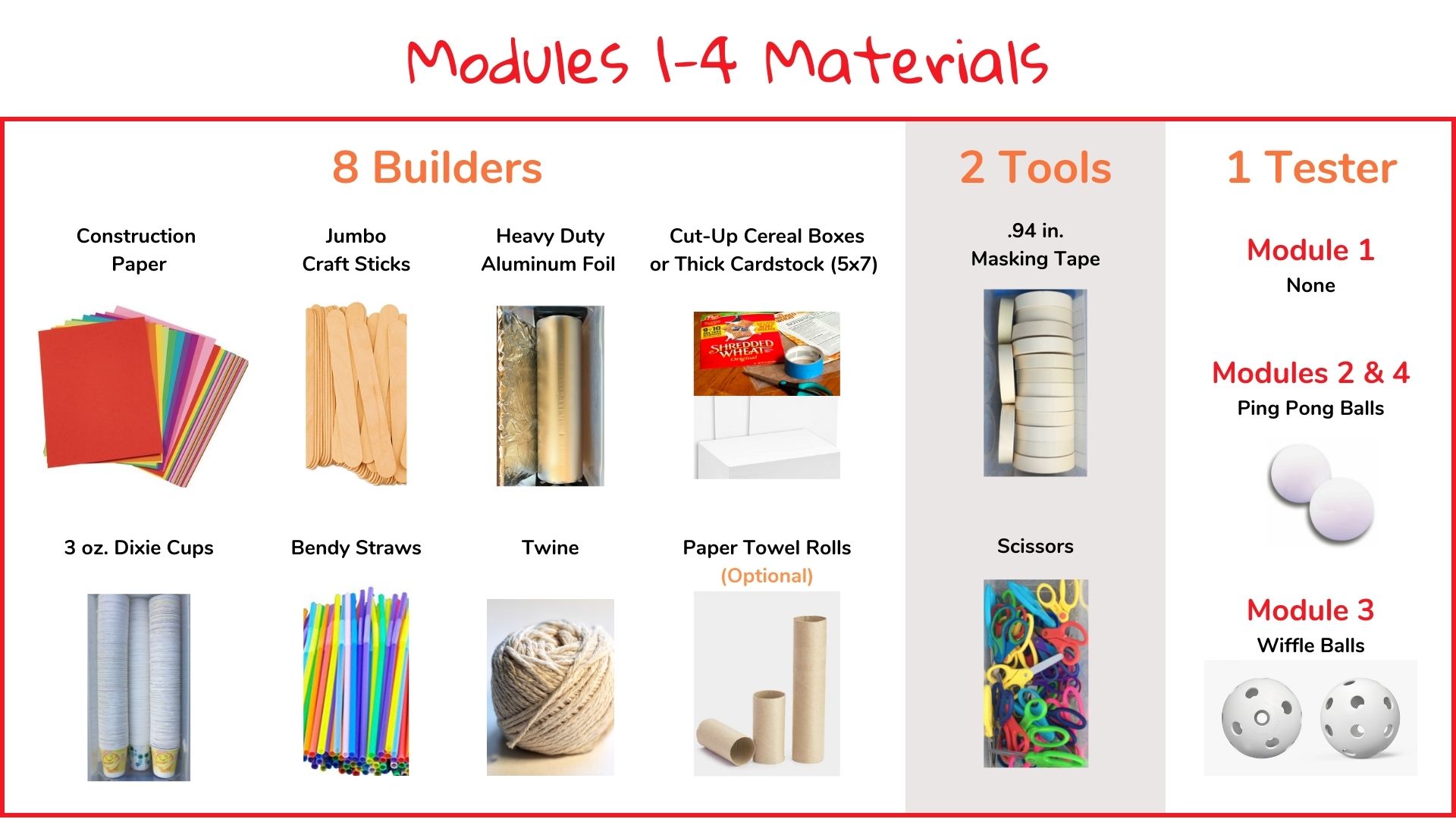STEM Challenge: Platinum Patroller Lands

Context and Challenge
A unique challenge has arisen with the Platinum Patroller’s arrival in Superhero Metropolis. The Platinum Patroller is a superhero known not only by his heroic deeds but also for the extraordinary weight of his platinum suit. In fact, all that weight has started causing problems. A bridge just collapsed under the weight of his landing. This event has sparked a critical mission for the residents: to engineer a solution that prevents such mishaps in the future and ensures the city’s infrastructure can withstand the extraordinary demands of housing this superhero.
Build bridges that incorporate robust trusses capable of supporting the significant weight and impact of the Platinum Patroller’s landings.
Constraints and Success Criteria
- The bridges must feature a comprehensive truss system to distribute and support the weight of the Platinum Patroller’s landings effectively.
Materials

You do not need any testers for this challenge.
Logistics
- Prepare Materials: Ensure you have all the necessary materials ready beforehand and organize them so that they are easily accessible to students. Students should use no more than five of any one material per creation! For example, a student can use five straws and five pieces of paper, but not ten straws. If you provide aluminum foil, no more than one arm’s length piece for each student!
- Set Up Testing Area: Create a designated area where students can test their bio bubbles.
- Provide Guidelines and Constraints: Reiterate the challenge and the constraints to students as needed. Emphasize the importance of following safety guidelines and considering the constraints, while designing their bio bubbles. Building time is 45 minutes!
- Model the Design Process: Before students begin, demonstrate the design process by going through the steps yourself. Discuss how to brainstorm ideas, create prototypes, test them, and make iterations based on the results, as needed.
- Encourage Collaboration: Foster a collaborative environment where students can work together in pairs. Encourage them to share ideas, help each other troubleshoot challenges, and provide constructive feedback throughout the process. But no groups of three!
- Support Adaptation: Encourage students to embrace the mindset of adaptation and problem-solving. Help them see that setbacks and failures are opportunities to learn and make improvements. Guide them in identifying areas for adaptation and brainstorming alternative solutions.
- Facilitate Reflection: Set aside time for students to reflect on their design process and decision-making. Ask questions that prompt them to think critically about their choices, challenges they faced, and what they learned from the experience. This reflection can be done individually, in pairs, or as a whole-class discussion.
- Celebrate and Showcase: Once students have completed the challenge, celebrate their efforts and showcase their work. Provide opportunities for students to share their experiences, explain their design choices, and reflect on the overall learning journey.
CASEL Discussion Questions
Five questions aligned to Self-Awareness and Self-Management — our focus CASEL competencies for Module 1 — for teachers to foster an engaging discussion and social-emotional learning


